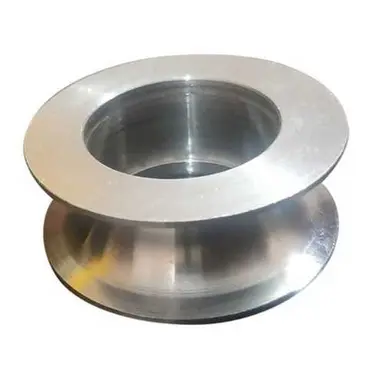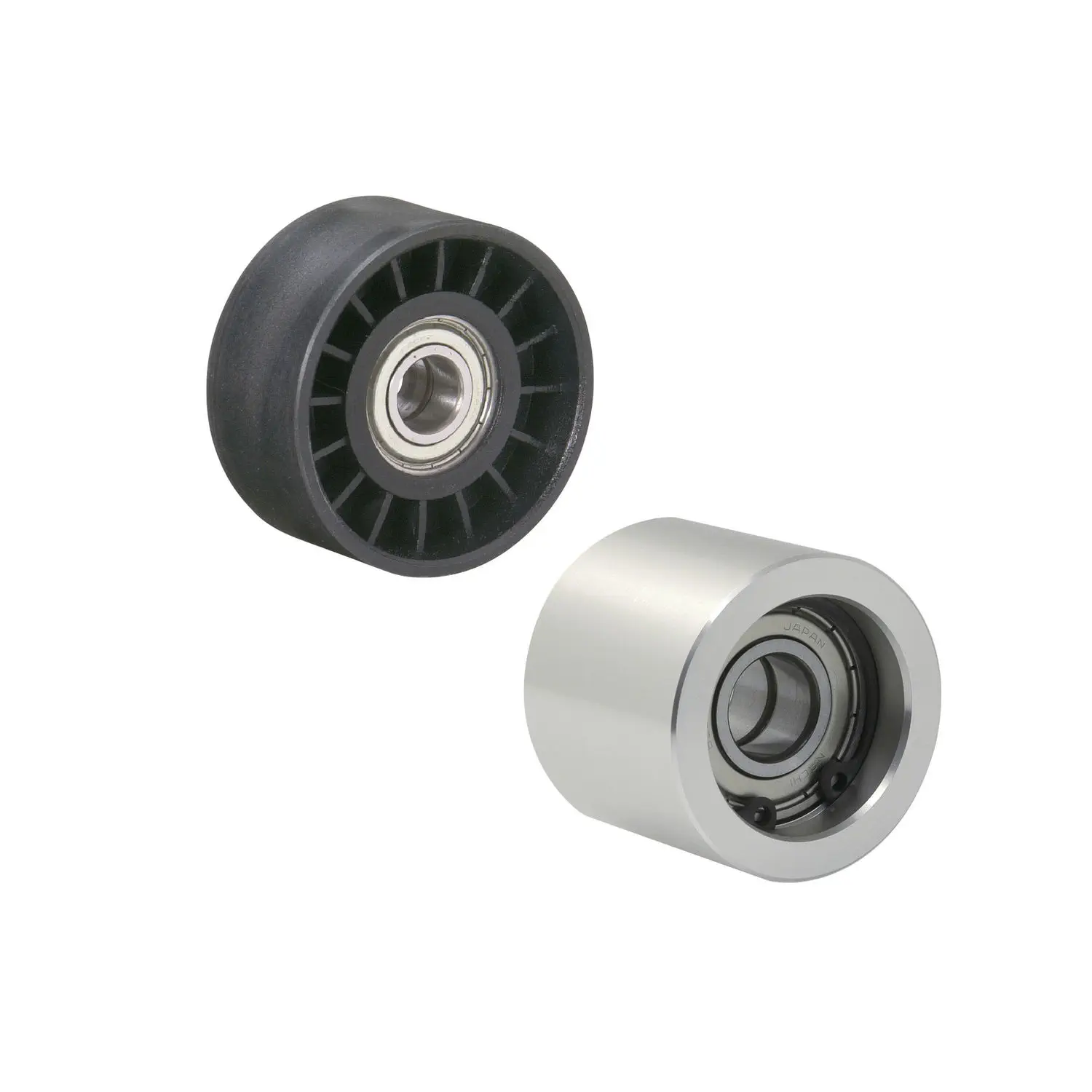Product Description
belt conveyor carrier roller idler impact roller idler rubber cover conveyor roller drive pulley
Product Description
Hyton provides one-stop solution service for your metallurgical equipment spare parts, currently we produce rolling mill rolls, guide, blades, gears, sprocket wheels, worm, worm gears, flange processing parts, welding processing parts and etc.
Rolls do the most important work in a rolling mill. They constitute a very important component of the running cost of the rolling mill. Hence, it is necessary that optimum performance is obtained from the rolls. Rolls come in a wide variety of sizes, the smallest roll weighs only a few kilograms, the heaviest around 250 tons a piece, and the variety of grades used is also wide, from ductile iron (spheroidal graphite iron) to tungsten carbide, covering all kinds of tool steels and special steels, used only for rolls. Roll properties include blend of hardness and strength as well as resistance to thermal cracking, shock loading, and wear.
| Product Name | Conveyor Pulley |
| Size | Customized |
| Color | Customized |
| Technology | Forging |
| Surface Treament | Paint Spraying, Grind Machining, Heat Treatment |
| Material | Alloy steel, Carbon steel, Carburizing steel, Quenched and Tempered steel |
| Inspection | Chemical Composition Test, Ultrasonic Test, Penetration Test, Radiographic Test, Magnetic Test, Tensile Strength Test, Impact Test, Hardness Test, Dimension Test |
| Payment | L/C, Western Union, D/P, D/A, T/T, MoneyGram |
| Lead Time | 4 weeks |
Chemical Component
| C | Si | Mn | Cr | Ni | Mo | HS | Mpa |
| 0.50-0.60 | ≤0.40 | 0.50-0.80 | 0.50-0.80 | 1.40-1.80 | 0.15-0.30 | 55-58 | ≥1200 |
| 0.40-0.47 | 0.40-0.70 | 0.40-0.60 | 1.50-2.00 | 0.80-1.20 | 0.80-1.20 | 54-56 | ≥1200 |
| 0.32-0.42 | 0.80-1.20 | ≤0.40 | 4.50-5.50 | 1.60-2.40 | 2.00 | ||
| 0.35-0.45 | 0.80-1.20 | 0.25-0.70 | 3.00-3.75 |
Company Profile
HangZhou CHINAMFG Heavy Industry Technology Development Co., Ltd. is a leading enterprise in the wear-resistant casting of large engineering machinery and the forging of large equipment parts located in the New Material Industrial Park, Xihu (West Lake) Dis. High-Tech Zone, HangZhou City, the company covers an area of 90 Square kilometer and currently has more than 300 employees. The company is equipped with lost molding production line and lost casting production line imported from FATA Company in Italy, Inductotherm Vacuum Degassing Furnace(USA), Foseco Casting Technology(U.K), SPECTRO Spectrometer (Germany), the currently most advanced ZZ418A vertical parting flaskless shoot squeeze molding machine Disa production line, horizontal molding line and self-control lost casting production line in China, the most advanced sand treatment system in China. With 3 gas trolley heat treatment CHINAMFG and pusher-type CHINAMFG full-automatic heat treatment production lines, the company can annually produce 30,000 tons of various wear-resisting castings and metallurgical equipment forging parts.
Manufacturing Technique
Packing and Shipping
To better ensure the safety of your goods, professional, environmentally friendly, convenient and efficient packaging services will be provided. After goods well packaged, we need only 1 day ship goods to ZheJiang port, which means that most of the spare parts you bought from Hyton, it will get your port within 45 days all around the world if shipment by sea.
Our Advantages
1)Your inquiry related to our product & price will be rapidly.
2) Well trained & experienced staff are to answer all your inquiries in English of course.
3) Your business relationship with us will be confidential to any third party.
4) One stop purchase service: extensive rang of products for qualified offering.
5) We response to client’s inquiry within 12 hours.
FAQ
1.Q: What kind of products do you make?
A: We specialize in metallurgical equipment casting and forging parts, such as forging rolls, guide, blades, gears, sprocket wheels, worm, worm gears, flange processing parts, welding processing parts and etc.
2.Q: What kind of material do you offer?
A: High manganese steel, high chrome iron, alloy steel, low carbon steel, medium carbon steel, Stainless Steel and etc.
3.Q: What is your time of delivery?
A: Our lead time is generally 2-4 weeks for casting parts and shipping time is about 2-4 weeks.
4.Q: How to test your quality?
A: We will show you material inspection and measurement inspection after fininsh the goods, at the same time, we will give you the life time guarantee letter after shipping the goods. The best suggestion to all the customer who may interest our product-Test 2 set first, all the good business relationship all from test and trust.
| Material: | Steel |
|---|---|
| Application: | Chemical Industry, Mining Transport |
| Structure: | Ordinary Roller |
| Bearing Type: | Double Sealed Bearing |
| Type: | Parallel Conveyor Idler |
| Transport Package: | Standard Packing |

How do you select the right roller pulley configuration for a specific material handling task?
Selecting the right roller pulley configuration for a specific material handling task involves considering several factors to ensure optimal performance and efficiency. Here are the key steps in the selection process:
- Identify Material Characteristics: Begin by understanding the characteristics of the materials being handled. Consider factors such as weight, size, shape, fragility, and surface properties. For example, heavy or bulky materials may require roller pulleys with higher load capacities, while fragile items may necessitate the use of cushioned or impact-resistant rollers.
- Determine Conveyor Layout: Evaluate the layout and configuration of the conveyor system. Take into account factors such as straight sections, curves, inclines, declines, or any specific requirements for diverting or merging materials. Different roller pulley types, such as tapered rollers or grooved rollers, may be needed to accommodate specific layout features and ensure smooth material flow.
- Consider Operational Environment: Assess the operational environment in which the roller pulleys will be used. Take into account factors such as temperature, humidity, presence of dust or debris, and exposure to corrosive substances. Some environments may require roller pulleys with special coatings or materials to withstand harsh conditions and prevent damage or premature wear.
- Calculate Load Capacity and Speed: Determine the load capacity and desired speed of the conveyor system. This involves considering the weight and volume of the materials being transported, as well as the desired throughput. Select roller pulleys that can handle the anticipated load while maintaining efficient operation and preventing excessive wear.
- Consider Special Requirements: Assess any special requirements or constraints specific to the material handling task. For example, if the task involves strict hygiene standards, roller pulleys made of materials suitable for cleanroom environments may be necessary. If noise reduction is a concern, selecting roller pulleys with noise-dampening features can be beneficial.
- Consult Manufacturer Guidelines: Consult the guidelines and recommendations provided by roller pulley manufacturers. They often provide technical specifications, load capacity charts, and application guidelines for different roller pulley configurations. Manufacturers can offer valuable insights and expertise in selecting the most suitable roller pulleys for specific material handling tasks.
By following these steps and considering the specific requirements of the material handling task, it becomes possible to select the right roller pulley configuration. This ensures optimal performance, longevity, and efficiency in material handling operations.

What role do roller pulleys play in controlling the direction and flow of materials?
Roller pulleys play a crucial role in controlling the direction and flow of materials in conveyor systems. They contribute to the efficient and reliable movement of materials along the desired path. Here’s how roller pulleys accomplish this:
- Change of Direction: Roller pulleys are used to change the direction of the conveyor belt, allowing materials to move along curved or angled paths. By using a combination of different-sized roller pulleys and carefully designed conveyor geometry, materials can be smoothly redirected as needed.
- Belt Tension and Tracking: Roller pulleys help maintain proper tension and tracking of the conveyor belt. Tensioning pulleys, also known as snub or take-up pulleys, are used to apply tension to the belt, ensuring it remains properly aligned and taut. Tracking pulleys, such as crowned or V-shaped pulleys, assist in keeping the belt centered and preventing it from drifting off-course.
- Controlled Material Flow: The arrangement and spacing of roller pulleys influence the material flow on the conveyor belt. By strategically positioning rollers, it is possible to create gentle inclines or declines, control the speed of material movement, and prevent material accumulation or blockages.
- Impact and Damage Reduction: Roller pulleys, particularly impact rollers, help absorb the impact of heavy or sharp-edged materials as they land on the conveyor belt. They cushion the impact, reducing the risk of belt damage and extending its lifespan. Roller pulleys also minimize friction between the belt and the pulley surface, reducing wear and tear on the belt and maintaining its integrity.
- Material Centering and Stabilization: Certain roller pulley designs, such as tapered rollers, assist in centering and stabilizing materials on the conveyor belt. Tapered rollers gradually guide materials towards the center of the belt, preventing them from veering off-course or getting stuck along the edges.
Overall, roller pulleys are essential components in controlling the direction and flow of materials in conveyor systems. They enable smooth changes in direction, maintain belt tension and tracking, control material flow, reduce impact and damage, and assist in material centering and stabilization. By utilizing the appropriate roller pulleys and optimizing their configuration, conveyor systems can effectively transport materials along desired paths with precision and reliability.

How does a roller pulley assist in the smooth movement of materials on conveyors?
A roller pulley plays a crucial role in facilitating the smooth movement of materials on conveyors. It is a specialized component that is typically installed at the ends of a conveyor belt. The roller pulley consists of a cylindrical drum, often made of steel or other durable materials, with a central axle that allows it to rotate freely.
When materials are placed on the conveyor belt, the roller pulleys provide support and enable the belt to move along a predetermined path. As the conveyor belt moves, the roller pulleys rotate, causing the belt to advance and carry the materials with it.
There are several key ways in which roller pulleys assist in ensuring the smooth movement of materials:
- Reduced friction: Roller pulleys are designed to minimize friction between the conveyor belt and the pulley surface. This is achieved through the use of smooth, low-friction materials and proper lubrication. By reducing friction, the roller pulleys help to prevent excessive wear and tear on the belt, allowing it to move more easily.
- Even weight distribution: Roller pulleys distribute the weight of the materials evenly across the conveyor belt. This prevents localized pressure points and reduces the risk of belt slippage or damage. The rotating motion of the roller pulleys also helps to disperse the load, ensuring that the materials are carried smoothly along the entire length of the conveyor.
- Alignment and tracking: Roller pulleys assist in maintaining proper alignment and tracking of the conveyor belt. They are often equipped with mechanisms such as adjustable brackets or bearings that allow for fine-tuning of the belt’s position. This helps to prevent the belt from veering off course or becoming misaligned, which could lead to operational issues and material spillage.
- Tension control: Roller pulleys are sometimes used in conjunction with tensioning devices to ensure the optimal tension of the conveyor belt. Proper tensioning is essential for preventing slippage and maintaining consistent movement. The roller pulleys, combined with tensioning mechanisms, help to keep the belt taut and stable, contributing to smooth material transport.
In summary, roller pulleys are indispensable components in conveyor systems, providing support, reducing friction, facilitating even weight distribution, maintaining alignment, and assisting in tension control. By enabling the smooth movement of materials, roller pulleys contribute to the efficiency and reliability of conveyor-based operations.


editor by CX
2023-11-18